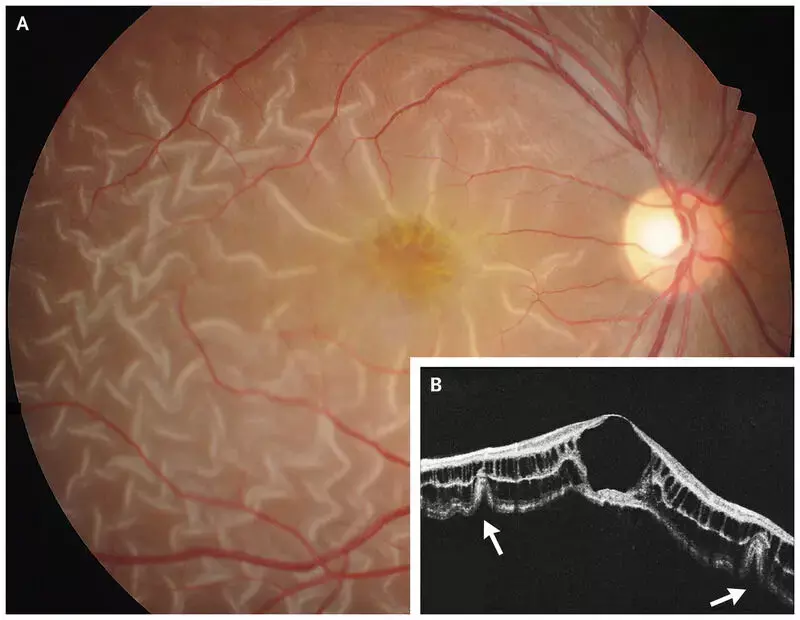- Home
- Medical news & Guidelines
- Anesthesiology
- Cardiology and CTVS
- Critical Care
- Dentistry
- Dermatology
- Diabetes and Endocrinology
- ENT
- Gastroenterology
- Medicine
- Nephrology
- Neurology
- Obstretics-Gynaecology
- Oncology
- Ophthalmology
- Orthopaedics
- Pediatrics-Neonatology
- Psychiatry
- Pulmonology
- Radiology
- Surgery
- Urology
- Laboratory Medicine
- Diet
- Nursing
- Paramedical
- Physiotherapy
- Health news
- Fact Check
- Bone Health Fact Check
- Brain Health Fact Check
- Cancer Related Fact Check
- Child Care Fact Check
- Dental and oral health fact check
- Diabetes and metabolic health fact check
- Diet and Nutrition Fact Check
- Eye and ENT Care Fact Check
- Fitness fact check
- Gut health fact check
- Heart health fact check
- Kidney health fact check
- Medical education fact check
- Men's health fact check
- Respiratory fact check
- Skin and hair care fact check
- Vaccine and Immunization fact check
- Women's health fact check
- AYUSH
- State News
- Andaman and Nicobar Islands
- Andhra Pradesh
- Arunachal Pradesh
- Assam
- Bihar
- Chandigarh
- Chattisgarh
- Dadra and Nagar Haveli
- Daman and Diu
- Delhi
- Goa
- Gujarat
- Haryana
- Himachal Pradesh
- Jammu & Kashmir
- Jharkhand
- Karnataka
- Kerala
- Ladakh
- Lakshadweep
- Madhya Pradesh
- Maharashtra
- Manipur
- Meghalaya
- Mizoram
- Nagaland
- Odisha
- Puducherry
- Punjab
- Rajasthan
- Sikkim
- Tamil Nadu
- Telangana
- Tripura
- Uttar Pradesh
- Uttrakhand
- West Bengal
- Medical Education
- Industry
Carbonic Anhydrase Inhibitors Show Promise for X-Linked Retinoschisis, suggests study

Researchers have found that carbonic anhydrase inhibitors (CAIs) may offer beneficial short-term management for cystoid fluid collections (CFC) in patients with X-linked retinoschisis (XLRS). A recent retrospective study conducted in Dutch and Belgian tertiary referral centers evaluated the efficacy of oral and topical CAIs on visual acuity and central foveal thickness (CFT) in XLRS patients, showing promising results despite modest changes in visual acuity. This study was published in Ophthalmology Retina journal by Jonathan H. and colleagues.
XLRS is a genetic eye condition characterized by the splitting of the retina, leading to visual impairment. There is currently no standard treatment regimen for CAIs in managing this condition. This study aimed to address this gap by assessing the effects of CAIs on visual acuity and CFT in a cohort of XLRS patients.
This retrospective cohort study included 42 patients diagnosed with XLRS. Patients who had undergone treatment with oral CAI (acetazolamide), topical CAI (brinzolamide/dorzolamide), or a combination of both for at least four consecutive weeks were enrolled. The median age at the baseline visit was 14.7 years, with a range of 43.6 years, and the median follow-up period was 4.0 years.
Patients were treated with either oral CAI, topical CAI, or a combination of both. The primary outcomes measured were CFT and best-corrected visual acuity (BCVA). The effectiveness of the CAI treatment was evaluated by the changes in these parameters over the follow-up period.
• Oral CAI Treatment: Among the 25 patients treated with oral CAI, there was a significant reduction in CFT by 14.37 μm per 100 mg per day (P < 0.001; 95% CI, −19.62 to −9.10 μm). Visual acuity also improved modestly with a change of −0.0059 logMAR per 100 mg (P = 0.008; 95% CI, −0.010 to −0.0013 logMAR).
• Topical CAI Treatment: For the 24 patients treated with topical CAI, CFT decreased by 7.52 μm per drop per day (P = 0.017; 95% CI, −13.67 to −1.32 μm).
• Combination Therapy: Eleven patients received a combination of oral and topical CAI, showing trends similar to the individual treatments.
• Side Effects: Seven patients (17%) experienced side effects that led to the discontinuation of treatment.
The study highlights that oral CAI treatment can significantly reduce CFT in XLRS patients, although the improvement in visual acuity was modest and not of clinical significance. Topical CAI also showed a reduction in CFT, but to a lesser extent. Despite the modest visual acuity improvements, the anatomical benefits of reduced CFT could create a more favorable condition for potential future treatments, such as gene therapy.
Treatment with carbonic anhydrase inhibitors, particularly oral CAIs, may provide short-term benefits for managing cystoid fluid collections in XLRS patients. Although the visual acuity changes were minor, the significant reduction in central foveal thickness suggests that CAIs could play a role in optimizing retinal conditions for future therapeutic options.
Reference:
Hensman, J., Hahn, L. C., van Schooneveld, M. J., Diederen, R. M. H., ten Brink, J. B., Florijn, R. J., Bergen, A. A., Strubbe, I., Heutinck, P., van Genderen, M. M., van den Born, L. I., Thiadens, A. A., de Zaeytijd, J., Leroy, B. P., Hoyng, C. B., & Boon, C. J. F. (2024). Efficacy of carbonic anhydrase inhibitors on cystoid fluid collections and visual acuity in patients with X-linked retinoschisis. Ophthalmology Retina, 8(6), 600–606. https://doi.org/10.1016/j.oret.2023.12.003
Dr Riya Dave has completed dentistry from Gujarat University in 2022. She is a dentist and accomplished medical and scientific writer known for her commitment to bridging the gap between clinical expertise and accessible healthcare information. She has been actively involved in writing blogs related to health and wellness.
Dr Kamal Kant Kohli-MBBS, DTCD- a chest specialist with more than 30 years of practice and a flair for writing clinical articles, Dr Kamal Kant Kohli joined Medical Dialogues as a Chief Editor of Medical News. Besides writing articles, as an editor, he proofreads and verifies all the medical content published on Medical Dialogues including those coming from journals, studies,medical conferences,guidelines etc. Email: drkohli@medicaldialogues.in. Contact no. 011-43720751


